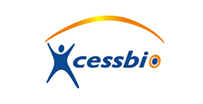
| Molecular Weight: | 484.94 |
| Formula: | C18H19F3N2O4S2.HCl |
| Purity: | ≥98% |
| CAS#: | 423148-78-1 |
| Solubility: | DMSO up to 100 mM |
| Chemical Name: | 5-(Phenylsulfonyl)-N-4-piperidinyl-2-(trifluoromethyl)benzene sulfonamide hydrochloride |
| Storage: | Powder:4oC 1 year. DMSO:4oC3 month;-20oC 1 year. |
Biological Activity:
WAY-316606 is a novel potent and selective inhibitor of secreted frizzled-related protein-1 (sFRP-1) with an IC50~ 0.65 μM. It prevents sFRP-1 from interacting with Wnt and thus increases Wnt signaling. WAY-316606 can increase total bone area in a murine calvarial organ culture assay.
How to Use:
- In vitro: WAY-316606 was used at 1-10 µM final concentration in various in vitro assays.
- In vivo:n/a
Reference:
- 1. Bodine PV, et al. A small molecule inhibitor of the Wnt antagonist secreted frizzled-related protein-1 stimulates bone formation. (2009) Bone. 44(6):1063-8.
- 2. Moore WJ, et al. Modulation of Wnt signaling through inhibition of secreted frizzled-related protein I (sFRP-1) with N-substituted piperidinyl diphenylsulfonyl sulfonamides. (2009) J Med Chem. 52(1):105-16.
- 3. Moore WJ, et al. Modulation of Wnt signaling through inhibition of secreted frizzled-related protein I (sFRP-1) with N-substituted piperidinyl diphenylsulfonyl sulfonamides: part II. (2010) Bioorg Med Chem. 18(1):190-201.
 WAY-316606_spec.pdf
WAY-316606_spec.pdf WAY-316606_MSDS.pdf
WAY-316606_MSDS.pdf
Products are for research use only. Not for human use.
ebiomall.com






>
>
>
>
>
>
>
>
>
>
>
>
本人目前需从电鳗放电器官中提取乙酰胆碱受体蛋白,提纯需要的步骤和电鳗器官都可以提供,有没有提供外包提纯服务的公司或者实验室。
NaturalProteinStopsDeadlyHumanBrainCancerInMice
ScientistsfromJohnsHopkinsandfromtheUniversityofMilanhaveeffectivelyproventhattheycaninhibitlethalhumanbraincancersinmiceusingaproteinthatselectivelyinducespositivechangesintheactivityofcellsthatbehavelikecancerstemcells.ThereportispublishedinNature.
Themostcommontypeofbraincancer-glioblastoma-ismarkedbythepresenceofthesestem-cell-likebraincells,which,insteadoftriggeringthereplacementofdamagedcells,formcancertissue.Stemcells,unlikeallothercellsinthebody,arecapableofformingalmostanykindofcellwhentheright"signals"triggertheirdevelopment.
Fortheirtreatmentexperiment,theresearchersreliedonaclassofproteins,bonemorphogenicproteins,thatcauseneuralstem-cell-likeclusterstolosetheirstemcellproperties,whichinturnstopstheirABIlitytodivide.
Firsttheypretreatedhumanglioblastomacellswithbonemorphogenicprotein4(BMP4),theninjectedthesetreatedcellsintomousebrains.Inmiceinjectedwithcellsthatwerenotpretreated,large,invasivecancersgrew.InthemicewithBMP4-treatedcells,nocancersgrewatall.Threetofourmonthsafterinjection,allmicethatgotuntreatedcellsdied,andnearlyallmicewithBMP4-treatedcellswerealive.
Next,thescientistsdeliveredslow-releaseBMP4-containing"beads"directlyintomousebrainswithimplantedglioblastomacells.Micethatgotemptybeadsdevelopedlargemalignanttumorsanddied.MicewithBMP4beadssurvivedmuchlonger,and80percentsurvivedfourmonthsaftercancercellimplants.
"OurideaistotreatpatientswithBMP4orsomethinglikeitrightaftersurgerytoremoveglioblastomainhopesofpreventingtheregrowthofthecancerandimprovingsurvivaltime,"saysAlessandroOlivi,M.D.,directoroftheDivisionofNeurosurgicalOncologyatHopkinsandacontributortothestudy.
OlivisaysclinicalstudiesusingBMP4couldbeginwithinayearand,ifsuccessful,drugtherapiescouldbeavailabletothepublicwithinthreetofouryears.
"ThiswasproofoftheideathatBMPscouldstopglioblastomabydepletingthestem-cell-likepopulationthatfeedsit,"saysHenryBrem,M.D.,chairmanoftheDepartmentofNeurosurgeryatHopkinsandacollaboratorinthestudy."Thisopensexcitingdoorstofutureresearchintotreatmentsandtherapiesforsuchadevastatingdisease."









